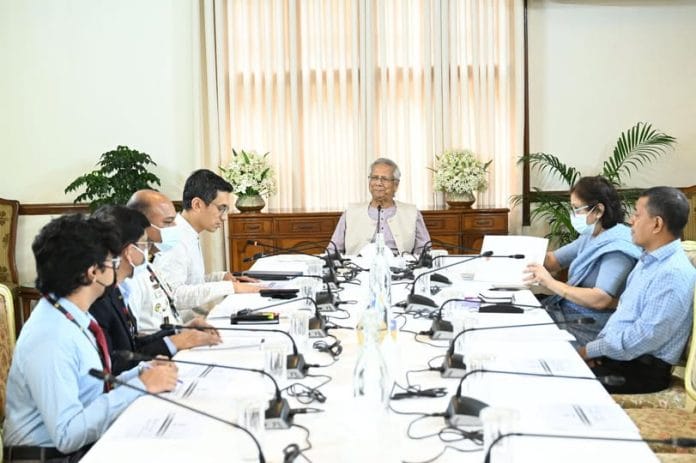Chief Adviser Professor Muhammad Yunus has said that a new city will emerge in the Maheshkhali–Matarbari region in Cox’s Bazar, built around the vision of developing a “blue economy” alongside the country’s planned deep-sea port.
“It will not just be a facilitating zone. A new city will be born there, creating international connectivity from Bangladesh. The sea will become our highway to the world,” the Chief Adviser remarked at a meeting with the newly formed Maheshkhali Integrated Development Authority (MIDA) on Wednesday at the state guest house Jamuna.
He stressed the need for greater research on deep-sea resources and proposed establishing an international-standard training facility in Maheshkhali. Yunus suggested seeking advice and cooperation from global experts where necessary.
“We have never really entered the world of the sea, nor even thought about it. There is no dedicated research or findings on it. We must study relevant international research, identify areas that align with Bangladesh’s context, and develop our own. For this, institutions are needed. Academia must be built, and international conferences on the ocean economy must be organized,” he said.
The Chief Adviser also emphasized environmental conservation, noting the importance of planning for forest protection in the area. The meeting also discussed setting up an eco-tourism park.
The MIDA delegation was led by Chairman Chowdhury Ashiq Mahmud bin Harun, accompanied by members Commodore Tanzim Faruq and Md. Sarowar Alam. Also present were Lamia Morshed, Principal Coordinator for SDGs at the Chief Adviser’s Office, and Secretary Md. Saifullah Panna.
During the meeting, the MIDA chairman presented a detailed plan on the Maheshkhali–Matarbari project, including the authority’s four-month work plan.
Ashiq Mahmud said the project will be implemented in three phases: 2025–2030, 2030–2045, and 2045–2055. Once completed, it is expected to create direct and indirect employment for around 2.5 million people and add $150 billion to the country’s GDP.

